New Prevention and Treatment Tips (COVID-19)
/0 Comments/in COVID-19, Dr. Murphree's Fibromyalgia Blog /by Dr. Rodger Murphree & TeamTreatment and Prevention Update:
Hydroxychloroquine, Remdesivir, NAC and Quercetin
As of late Monday April 12th, there are almost 2 million confirmed cases of COVID-19 and over 110,000 deaths.
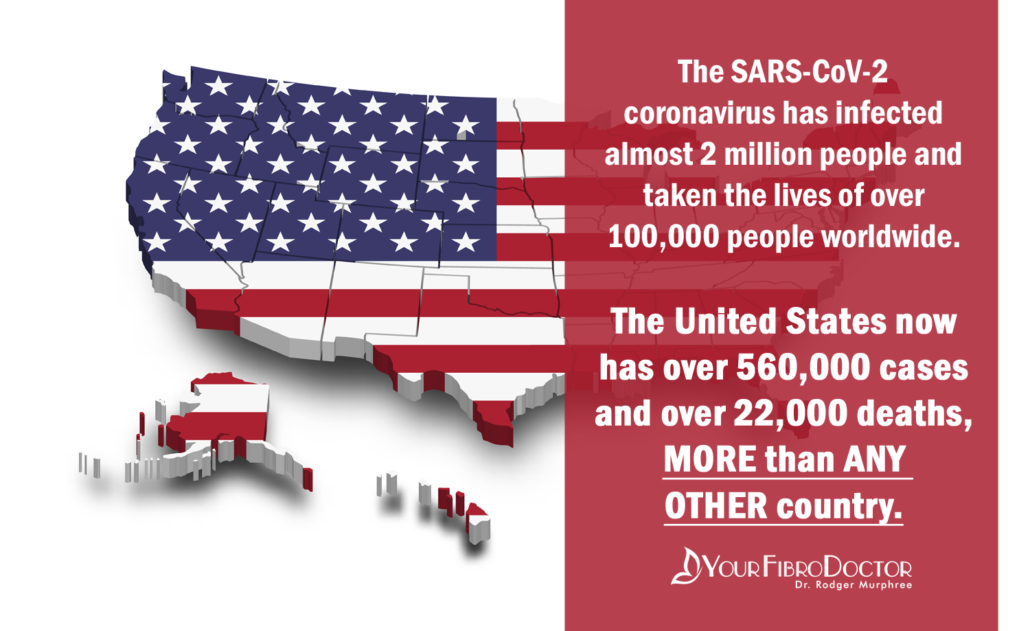
Information about COVID-19 and the virus SARS-CoV-2 the virus that causes the illness continues pour in from researchers, public health systems, and doctors on the front line. Staying abreast of the latest, constantly changing news is challenging and a bit stressful.
The World Health Organization (WHO) has declared COVID-19 a pandemic.
An epidemic refers to an uptick in the spread of a disease within a specific community. A pandemic is a global spread of a new disease.
COVID-19 is the name of the illness.
SARS-CoV-2 is the new coronavirus causing the disease COVID-19.
Treatment And Prevention Update
Last week I reported Chloroquine and Hydroxychloroquine for the treatment of COVID-19. These two malaria drugs are the most popular drugs being used by doctors around the world to treat COVID-19. The results have been mixed.
A few days ago the Chinese medical system reported that the evidence for these drugs was inconclusive.
As reported from -WUHAN, China—Chinese doctors who have for months treated patients on the front lines of China’s fight against the new coronavirus are now saying they haven’t seen clear evidence that chloroquine was effective.
A “Systematic Review on the Efficacy and Safety of Chloroquine for the Treatment of COVID-19” suggested similar caution. The authors performed a comprehensive search for everything related to the topic and found very little that had already been published: an in vitro study, two letters, a consensus panel of Chinese experts, a Dutch national guideline, an Italian national guideline and 23 Chinese trials.
Doctors are reluctant to recommend these drugs (Chloroquine and Hydroxychloroquine) without more research. They point out that the side effects including heart attack and heart failure are one of the reasons those with COVID-19 die.
Could these drugs be making things worse?
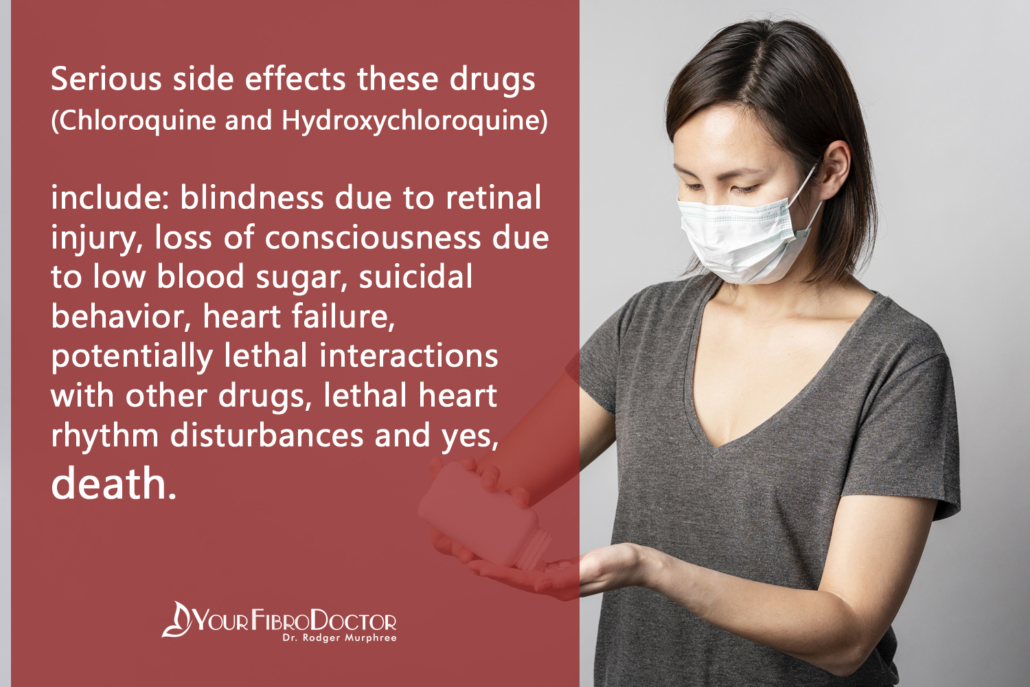
These drugs have been shown in vitro (in a test tube, not a living organism) to have a broad spectrum of antiviral activities. Although they have never been shown to have clear antiviral activity in humans against any virus, they have become widely used in China to treat COVID-19.
Remdesivir
Remdesivir is an investigational antiviral compound undergoing clinical trials in China, the United States, and the United Kingdom as a potential treatment for COVID-19.
Originally tested in Ebola patients, it has emerged as one of the hopes of improving outcomes in COVID-19 patients. The majority of clinical decisions related to COVID-19 are based on the historical knowledge gained Ebola, SARS, and MERS. The outcomes of RDV’s use in those three disease outbreaks is fairly disappointing.
- Remdesivir is not yet licensed or approved anywhere globally and has not been demonstrated to be safe or effective for any use.
- Remdesivir has demonstrated in vitro and in vivo activity in animal models against the viral pathogens that cause MERS and SARS, which are coronaviruses structurally similar to SARS-CoV-2, the coronavirus that causes COVID-19.
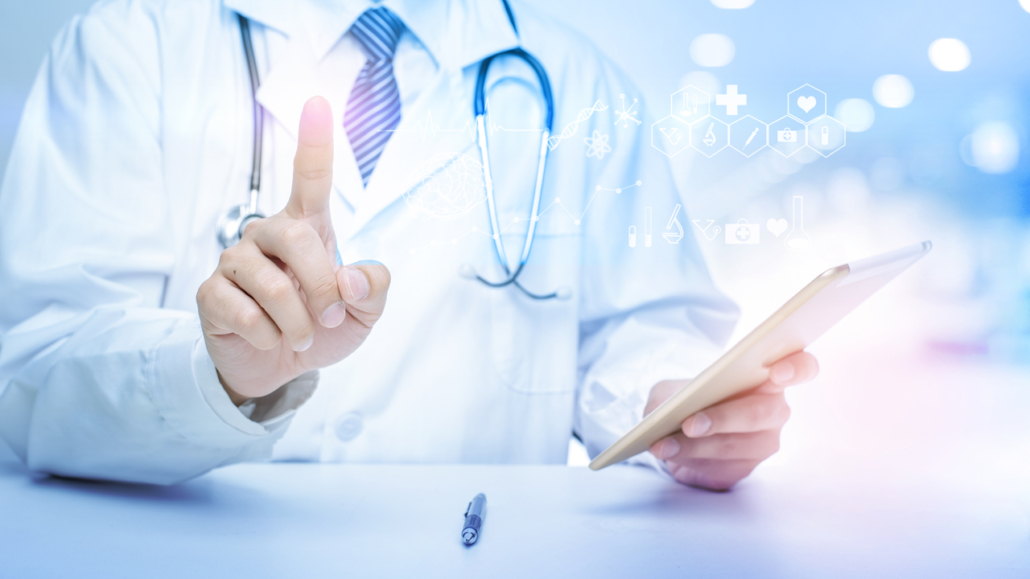
A very small study shows a new antiviral medication may be helpful for COVID-19
More than two-thirds of severely ill COVID-19 patients saw their condition improve after treatment with Remdesivir, an experimental drug being developed by Gilead Sciences Inc. (GILD.O), according to new data based on patient observation.
The analysis, published on Friday by the New England Journal of Medicine, does not detail what other treatments the 61 hospitalized patients were given and data on eight of them were not included — in one case because of a dosing error. The authors also caution that the number of patients was small and there was no control group.
The paper’s author called the findings “hopeful,” but cautioned that it is difficult to interpret the results since they do not include comparison to a control group, as would be the case in a randomized clinical trial. In addition, the patient numbers were small, the details being disclosed are limited, and the follow-up time was relatively short.
Before the treatment, 30 patients were on mechanical ventilators, and four were on a machine that pumps blood from the patient’s body through an artificial oxygenator. After a median follow-up of 18 days:
- 36 patients, or 68%, had an improvement in oxygen-support class, including more than half of the 30 patients receiving mechanical ventilation who had their breathing tubes removed.
- A total of 25 patients, or 47%, were discharged from the hospital.
- 7 patients, 13% of the total, died.
- 12 patients, 23%, had serious side effects including multiple-organ-dysfunction syndrome, septic shock and acute kidney injury.
Meanwhile, Josh Farkas, MD, who writes the PulmCrit blog, details his criticisms in a piece entitled, “Eleven reasons the NEJM paper on Remdesivir reveals nothing.” Beyond the issues the authors list, he points out several more, including cherry picking of patients. “Remdesivir was aggressively sought-after by thousands of patients with COVID-19,” he writes. “Of these patients, 61 ended up receiving the drug. Why did these patients receive medication, out of scores of patients applying to receive it?”
“Also, there are no follow-up data for 8 of the 61 patients who received an initial dose of the drug, leaving 53 for the published analysis…,” continues Farkas, who is an assistant professor of pulmonary and critical care medicine at the University of Vermont in Burlington.
As of March 26, 2020:
There are four U.S. trials. Two China trials are expected to complete at the beginning of April. There are two or three European trials that have RDV as a comparator, meaning it’s one of the drugs they are testing in a multi-drug trial. We should have preliminary results from these studies later this month.
For now the verdict is still out on whether hydroxychloroquine or Remdesivir, are affective in the treatment of COVID-19.

N-Acetyl-Cysteine (NAC)
I take NAC on a daily basis to help with seasonal allergies and to prevent periodic asthma symptoms. Since the new Corona Virus has an affinity for attacking lung tissue it makes sense to give NAC a look.
N-acetylcysteine – has been shown to reduce the frequency and/or severity of influenza, cystic fibrosis and COPD. It is available as a supplement. In view of the potential benefit it is worth consideration as a prophylactic measure against coronavirus respiratory illness.
NAC doesn’t exist in food, but is used as a supplement to help us get more cysteine into our cells. We get cysteine ordinarily by consuming protein, the stuff that builds our muscles and is found in meat, fish, poultry, milk, eggs, and beans. The extra cysteine has many valuable uses, including supporting the immune system and lung health.
NAC boosts one of the body’s main antioxidants: glutathione. It’s sometimes used to reduce cough and mucus in people with lung diseases.
I’m recommending 600mg of N-Acetyl-Cysteine (NAC) twice a day for prevention.
–> Learn more about our Essential Therapeutics NAC Plus Here
Elderberry and Quercetin
Once the Corona Virus enters human cells, it produces damage and spread to other cells by creating an enzyme called 3CL protease.
Although several enzymes may be involved in viral replication and spread, 3CL protease is the most important for the corona virus family.
The 3CL protease enzyme has been called “the Achilles heel” of corona virus and is the subject of new anti-viral drug development. Some dietary flavonoids inhibit 3CL protease in laboratory studies and for that reason may limit severity of infection.
Elderberry fruit (Sambucus nigra) and Quercetin inhibit the viral enzyme 3-CL protease and have been shown to inhibit corona virus activity in cells.
Quercetin
Quercetin is a type of flavonoid antioxidant that’s found in plant foods, including leafy greens, tomatoes, berries and broccoli. It’s technically considered a “plant pigment,” which is exactly why it’s found in deeply colored, nutrient-packed fruits and vegetables.
It’s been shown in dozens of studies to have anti-carcinogenic, anti-inflammatory and antiviral activities.
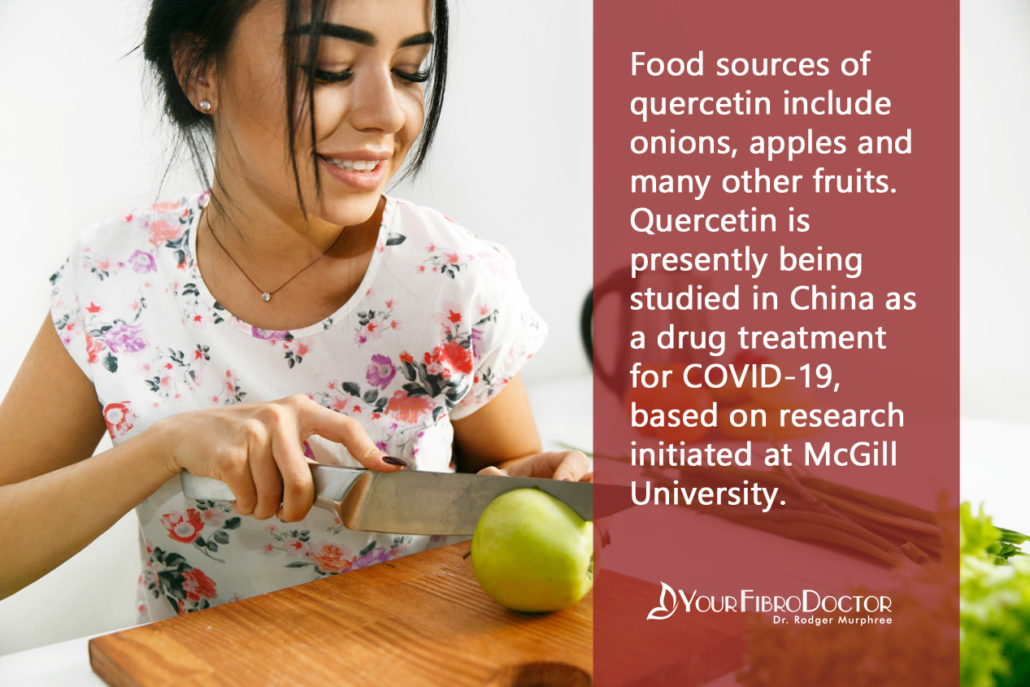
According to the Department of Pathology and Diagnostics at the University of Verona in Italy, quercetin glycosides and other flavonoids, are “anti-viral, anti-microbial, anti-inflammatory and anti-allergic agents.”
Recent in vitro studies have demonstrated that quercetin acts as a potent antiviral agent by inhibiting viral replication of several respiratory viruses, including influenza virus, parainfluenza virus, respiratory syncytial virus, adenovirus, and rhinovirus.
In one study, quercetin inhibited influenza A virus replication in the laboratory more effectively than the anti-flu drug Tamiflu®.
For the same reason I take NAC, I take Quercetin. These two nutrients help protect my lungs. And Quercetin is great for allergies. It blocks the allergic response at several points. It suppresses the actions of immune system cells, reducing the amount of the substance called histamine, that accounts for itchy skin, watery eyes, and (more dangerously) loss of blood pressure during serious allergic reactions. Quercetin also impairs the function of certain cell types that lie at the heart of the allergic and autoimmune processes.
Quercetin blunts the allergy-like components of the asthma response. It reduces the number and activation of inflammatory immune system cells, cuts histamine levels, and relaxes airway smooth muscle.
In chronic obstructive pulmonary disease (COPD), chronic inflammation, oxidant stress, and physical damage to the lungs conspire to obstruct airflow. In severe cases, the walls between alveoli (tiny air sacs) break down in the condition known as emphysema, that results in wheezing, labored breathing, and eventually heart disease.
Quercetin in laboratory studies opens up COPD-inflicted airways. It restores normal elasticity of lung tissue and reduces inflammation.
Quercetin is normally taken as 400-600mg twice a day. –> LEARN MORE
You should continue to practice social distancing and if possible limit exposure to others when returning to regular daily activities.
For those who need to boost their immune system I’m recommending these preventative supplements to my patients.
All Immune Boosting Supplements Are On Sale! –> LEARN MORE | BUY NOW
P.S. Are You Sick and Tired of Being Sick and Tired?
You can feel good again! 17 years specializing in fibromyalgia – I’ve helped thousands feel good again!

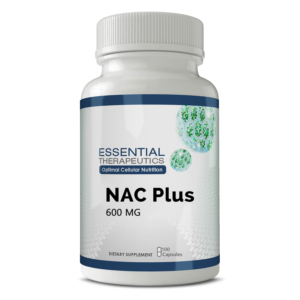
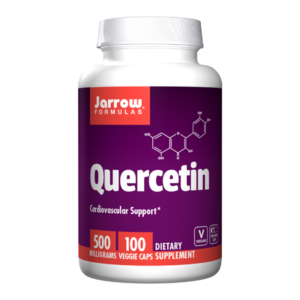
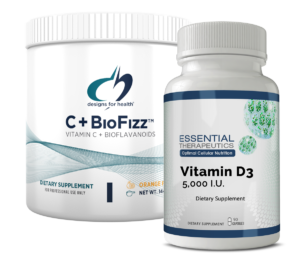
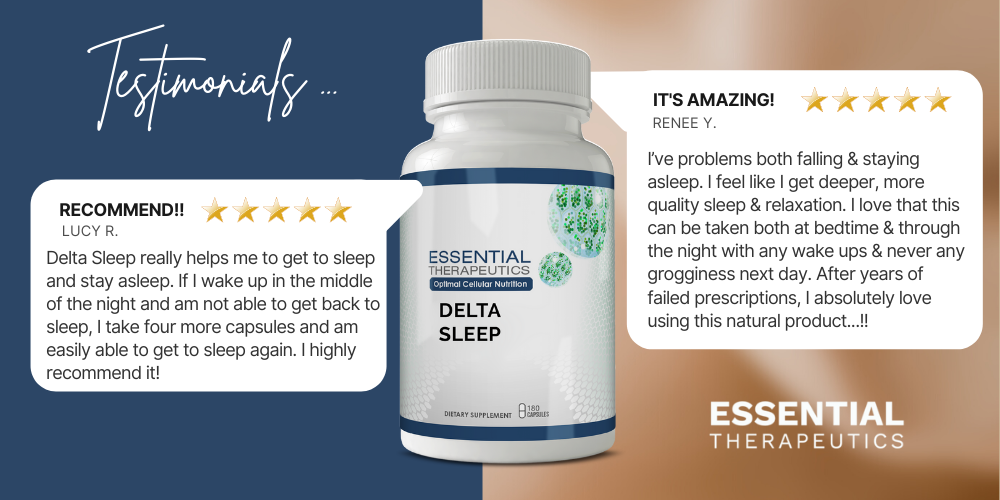


Leave a Reply
Want to join the discussion?Feel free to contribute!